- Sustainability
- DE&I
- Pandemic
- Finance
- Legal
- Technology
- Regulatory
- Global
- Pricing
- Strategy
- R&D/Clinical Trials
- Opinion
- Executive Roundtable
- Sales & Marketing
- Executive Profiles
- Leadership
- Market Access
- Patient Engagement
- Supply Chain
- Industry Trends
Region in Reform? Access Pains and Gains in Latin America
Pharm Exec convenes a panel of biopharma executives responsible for the Latin America business to discuss investment, market access, and reimbursement issues in this key and challengingly diverse growth market for the life sciences industry
Pharm Exec convenes a panel of biopharma executives responsible for the Latin America business to discuss investment, market access, and reimbursement issues in this key and challengingly diverse growth market for the life sciences industry
Despite strong differences among individual countries in their approaches to healthcare and development, as a region, Latin America remains a key market of interest for the pharmaceutical industry. Local demographics are favorable to medicines due to a growing working age population with the disposable income to invest in improved health status. Most of the region’s governments are committed to the principle of universal health
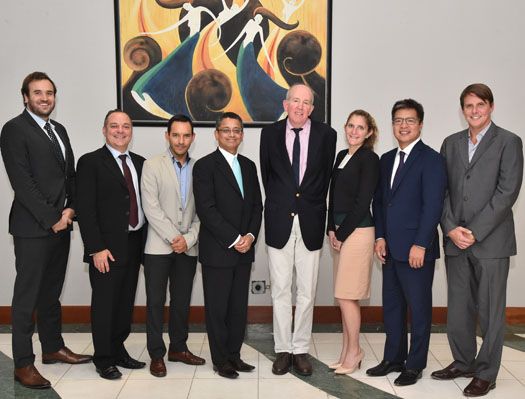
coverage-although the details are often obscured by political conflicts over affordability, transparency, and rule of law.
Latin America also faces pushback against its longstanding commitment to global integration as the US and Europe pivot back toward an inward-looking policy agenda that could frustrate efforts to
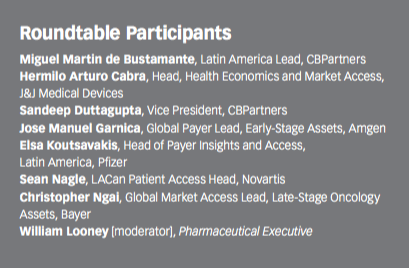
upgrade and harmonize national regulatory standards on issues ranging from drug safety surveillance to intellectual property IP.
To place these larger issues in the proper commercial context, Pharm Exec, with support from Latin American thought leadership at CBPartners, recently convened a small group of company market access experts to review opportunities and challenges for this mission-critical function. The following Q&A covers principal conclusions from the conversation.
PE: Can each of you on the panel identify what’s top of mind in your job currently-and how we might best address it in our meeting today?
Hermilo Arturo Cabra, J&J Medical Devices: I manage the health economics and market access group for J&J’s medical devices in the Latin America region. The bulk of my time is spent on five countries: Brazil, Argentina, Chile, Colombia, and Mexico. My current issue of concern is how best to make governments and payers understand the value that medical devices deliver to patients. What local institutional arrangements are optimal in building support for health innovation? In addition, how do we approach patients in a way that empowers them-to understand what our technology can do in managing their condition and to help them see what practices and policies are needed to ensure this technology will continue to be available in their communities.
One thing I am convinced of is incorporating best practices from other markets applicable to Latin America. Our companies are global and, thus, have broad exposure to ideas that work-or don’t work. We have observed a number of mistakes in securing access to our devices, which gives us a learning curve to share with colleagues in different countries.
Sean Nagle, Novartis Pharmaceuticals: I lead the Patient Access function in Latin America and Canada. I see patient access as the root and branch of what was called market access in the past, encapsulating activities like P&R, health economics and outcomes research, as well as the structured key account management relationships with payers and providers. Patient access is the driver of a changing business model for Novartis, where we are moving from being only a drug company selling pills to more of a holistic disease partner co-creating solutions. The focus on more holistic solutions forces us to extend ownership of the process to many other areas of the company, beyond market access itself. It is now an integrated approach, with the objective to influence how better care is actually delivered to the patient.
The issue that drives me is improving patient outcomes in the region. How do we do it? How can we show the results to the stakeholders? Each country has differing layers of influence and that in turn shapes the practice of health care. Right now, we are a bit aspirational on this goal but up to the challenge because Novartis is convinced that the individual patient must be at the very center of the transition to an outcomes-based system of delivery and financing care.
Elsa Koutsavakis, Pfizer Inc.: I am a member of the Global Health and Value group at Pfizer, where I am responsible for coordinating access priorities across the Latin America region. I am also responsible for optimizing the resources and capabilities of our in-market Health and Value function in order to address these key priorities. Top of mind for me in my role today are the impacts of health technology assessment (HTA) as an access decision tool; changes in local and regional tendering environments; and, critically important, recruiting, retaining, and developing local talent in the pricing and market access function.
Our function is still in its infancy in Latin America, so as an industry we continue to focus on evolving our access capabilities and our engagement in the access environment. The environment poses a unique and often complex payer environment requiring a deep understanding of the stakeholder landscape. Every community is different; there is no one pathway to success.
A final priority for me is fostering increased innovation, internally and externally. I’d be interested in learning how the medical device business raises innovation and whether this might be applicable to the pharmaceutical sector. I see some opportunity in leveraging other sectors for good ideas around innovation.
Miguel Martin de Bustamante, CBPartners: My interest is identifying short- and long-term steps that companies can take to help governments achieve sustainability in their respective national health systems amid the recent political turmoil and economic recession plaguing much of the region. The key question is how to bridge the performance and credibility gap among companies and major institutions of society, so innovative industries like biopharma can benefit from the assets they bring to the region.
Jose Manuel Garnica, Amgen: I am Amgen’s global lead on payer relationships in oncology, with a focus on early stage assets. My company is only 35 years old, yet today we are the world’s number one biotech in annual sales. My issue of concern is a constant: to see the future. What will cancer treatment be in 10 years and what will be the extent of the region’s involvement, in terms of access to care as well as the progress in R&D? I am a Venezuelan, so I am acutely aware of the dips and curves in health status. Only recently, my country was the third-largest pharmaceutical market in Latin American. Today, the health system is in a total state of collapse.
Our function is relatively new, but not so new that we cannot tap into some learnings. Because we have had approximately 15 years to understand the evolution of market access programs in Latin America, I am interested in the question of whether countries are allocating health resources wisely, in a manner that supports overall economic and social development.
Christopher Ngai, Bayer: I lead an access core team comprised of functional experts and representatives of several key markets, including Brazil and China, for the oncology therapeutic area. The access core team shares global/local responsibilities for global outputs to enhance market access for core brands and pipeline assets. In adopting this model, we aim to achieve meaningful value differentiation and practical solutions to expand access to our products in markets like Latin America.
One of my priorities is to explore different access models for innovative medicines in emerging markets where we have witnessed a rapid rise in demands for affordable, cutting edge healthcare led by a growing middle class. In my view, a common challenge toward this goal has been a tendency toward policy debates around a narrow band of issues, too often just on managing drug costs.
A more urgent question is how emerging markets such as Latin America can reform their national healthcare system to address a pending demographic shift toward an aging population. I would like to understand how we can partner with governments and other stakeholders to prepare for this transition, knowing that any change would have to be flexible and accommodative to emerging markets’ unique economic cycles.
PE: Many experts spotlight the importance of macro-economic trends in shaping the local environment for innovation in healthcare delivery and financing-after all, medicines are entirely dependent on investment, particularly in Latin America, from the private side. And you cannot increase investment with a strong positive macro-economic signal to investors.
Sandeep Duttagupta, CBPartners: The regional economy is currently in a transition phase. The commodity-induced recession that began in Brazil in 2015 has spread to a number of other markets while significant currency fluctuations have persuaded several major pharmaceutical developers to write down some of their assets in the region. The economy in the fourth quarter of 2016 has stabilized; we see a good recovery taking root in 2017. A broad commitment to universal healthcare, combined with healthier growth in the private sector, will put spending on pharmaceuticals and vaccines back in the picture. Biosimilar investment looks especially promising along with new innovative device technologies like robotic surgery. The trend marks a dramatic change from 18 months ago, when companies were considering leaving some markets or restructuring their local presence as a purely distribution operation.
Garnica: Economic expansion may raise the ante on new biopharma investment-but is the IP system ready for it? IP has always been a cautionary grey zone for investors.
Duttagupta: On IP, you have to distinguish between risk and the type of investment. I don’t see the big biopharma manufacturer avoiding local new product launches due to fears about losing control of the patent. Licensing deals remain a challenge, especially for smaller biotechs that lack the resources to register their IP and conduct strong due diligence on a potential local partner. Both tend to be costly to execute in most Latin American countries. But conducting thorough due diligence remains critical.
The most important policy issue in Latin America is the commitment in most countries to universal health coverage. The debate is moving forward, but in a

piecemeal manner. Little is known about what a basic benefit package would look like; in addition to the standard hospital services, would essential medicines and medical devices be included? This is not clear.
One thing we do know is that universal health coverage involves a difficult series of tradeoffs, accentuated by the tense debate in most countries over public debt and budget deficits. What percentage of the population will actually be covered by insurance? When medicines and vaccines comprise upwards of 15% to 20% of total health spending, will this segment be singled out for the deepest cuts? Such benchmarking is time-consuming and threatens future industry investment risks in the region.
Koutsavakis: A broad range of perspectives from private and public stakeholders need to be included in the dialogue on universal health coverage in order to create policies to that meet the needs of patients and society. Today, not all Latin American countries have inclusive or transparent forums for public policy.
Bustamante: Countries also have their own definitions of what constitutes universal healthcare coverage, especially when it comes to equality in access to medicines. On one side, you have institutions similar to “Seguro Popular” in Mexico or the recently ratified “Cobertura Universal de Salud” in Argentina, which function similar to a safety net for those unemployed or informally employed but have arguably less access to innovative therapies.
On the other side, you have countries like Colombia which has taken steps to equalize access for all health plans of the EPS, contributory and subsidized, by making the minimum obligatory coverage list the same. These different approaches are often the result of political decisions driven by an interpretation of constitutional law and without much consultation with citizens.
Koutsavakis: The application of HTA policies in the region, including in Colombia, are not always clear and are often open to interpretation. In its best form, HTA is a helpful tool for payers to make allocation and investment decisions; however, without transparent and certain process and principles, HTA can become a cost-containment method and a barrier to access-contradicting a goal of universal health coverage and patient access to medicines. Industry needs to be a partner to payers, governments, and stakeholders toward universal coverage goals.
PE: Universal coverage can only take place if the relevant power centers-in this case, the ministries of health and finance-are aligned around a specific definition of what universal coverage means. Are the two working together in your respective markets?
Cabra: In Colombia, the health and finance ministries are working in concert to get this commitment done. However, the devil is in the details. Defining what it actually meant by universal coverage is going to require some parsing of the language. It’s not going to be simple or straightforward. I’d say this point applies to other countries as well.
Ngai: In my experience, we don’t often see comprehensive, coordinated efforts to address economic and policy constraints that stand in the way of transparent, sustainable, and affordable healthcare systems. In response, the country market access function often devotes a significant portion of resources toward putting out “fires” than on solutions that address long-term needs, unfortunately.
Nagle: There is one benchmark by which Latin Americans assess the commitment to achieving universal health coverage: what percent of country GDP is attributable to public and private health spending? Increasingly, however, the finance ministries may be challenging the health ministries on this score, contending that investments in health are not leading to higher productivity, better outcomes. In fact, much of the spend is actually wasted if it is not improving patient outcomes. Money is poured into an inefficient system that spreads itself thin trying to fulfill the expectations that universal healthcare is given to a growing number of patients. I think a message is that real reform of value-based care has to come first, before the government opens up their budgets; perhaps then governments will agree to more significant healthcare investments.
Duttagupta: The eternal dilemma in healthcare is the limited supply of care coupled with an unlimited demand for it. There is a need for precedent that can resolve this dilemma. One country must take a leadership role to take on the challenge of sustainable reform, and show the rest of the region it can be done right.
Garnica: Is this not already being done in the private sector? There are models we can point to based on the region’s history of melding public and private resources to serve different stakeholders: the subsidized rural poor; urban, wage-based manufacturing workers; and the rich who pay out-of-pocket. This model is actually a good one for countries with an expanding middle class, as there is a lot of choice for the consumer. China, for example, has an inflexible health system, with no widespread source of private insurance. Patients are still largely dependent on cash payments for care.
I think Latin America does better than that. The private sector is going to thrive here because its momentum comes from the growth of middle-class entrepreneurialism.
Cabra: Private health is certainly a viable alternative to the inefficiencies that characterize public delivery. The problem is that access tends to be restricted to people with the ability to pay, which makes it harder to convince some quarters that
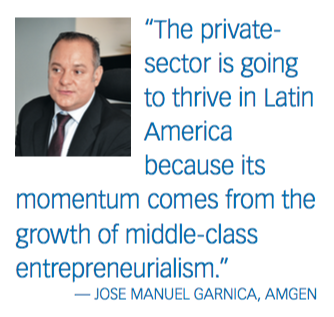
the private sector can be a driver of innovation everywhere in the health system.
Garnica: We have to be realistic about what universal access means in Latin America compared to Europe. It’s fanciful that countries here can approach that level of access. Nevertheless, private sector care delivery is well established. It has served a good portion of the population relatively well. It’s a valuable part of the healthcare mix and has potential in advancing innovation in the system overall.
Duttagupta: The value of the private sector healthcare is the opportunity it presents for partnership with the industry around a more innovative delivery model. Consider what has been done in China, with Roche joining with Swiss Re, the reinsurance giant, to support the establishment of private insurance coverage for patients with cancer. Similar efforts are underway now in Brazil as United Healthcare and Aetna take steps to enter the insurance market. This is precisely what these markets need-more choice for patients.
PE: If the will is there, are national regulatory systems prepared to incentivize and support the partnering model?
Duttagupta: Unfortunately, no. There is a huge time lag for a new innovation to move from discovery to the patient. Consider that a curative drug like Gilead’s Sovaldi for hepatitis C, with a 90% plus efficacy rate, is still not available in some Latin American countries despite being on the market in the US and Europe for three years. In fact, the median time from regulatory approval to actual funding for a new product is also three years in the Latin American region. It takes that long just to find out if a product will be reimbursed. That’s demoralizing no matter how wonderful working with a local partner can be.
Ngai: In this case, the issue may be a lack of courage and vision. The potential budgetary impact has stood in the way of access to a life-saving and potentially cost-saving treatment. Emerging markets will continue to struggle with funding and making available breakthrough therapies without significantly increased contributions from its middle class, which is not popular. No one wants to abandon the promise of a universal healthcare. However, enabling differential access in a market-that pricing and reimbursement adjusts to affordability-is worth considering, albeit a difficult choice.
Koutsavakis: Given the reimbursement systems in most Latin American markets, government and the public health community is critical to our success in the region. The private healthcare sector is also an important area for our function, particularly in terms of partnership opportunities and innovative access pathways. The challenge of overcoming institutional inertia and limited transparency adds to the complexity of achieving access.
Nagle: According to some local trade associations, the success rate in obtaining access to national formularies in some markets for an innovative medicine to be listed, averages in the single digits – as low as six per cent.
Duttagupta: Governments are raising the ante on cost-effectiveness. In Brazil, ANVISA’s decisions involving public sector pricing invariably trickle down to the private side. HTA is well-established in most markets, and the agencies are talking more frequently and sharing information.
PE: What is the response of big Pharma manufacturers to the slow integration of pricing and cost-effectiveness tools throughout the region? How do you protect against blowback from one market to another?
Duttagupta: This is coming up in Colombia, which has launched international reference pricing and is moving to a more formalized approach to HTA. Will the low price you accept in another, larger market that you can make up through higher volume end up pushing your prices further down in Colombia? Good intelligence and strong data capabilities are vital to the assessment of what to do. Each company also
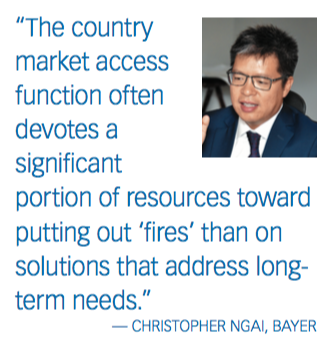
has to begin with a frank assessment of their product portfolio. A diversified set of high quality products, in key therapeutic areas relevant to public health, confers advantage over those with more limited prospects.
PE:Are decisions of the HTA authorities grounded in institutional reality? Is HTA seen as a “need to have” construct or just “nice to have?”
Cabra: The reality is a confusing mix of different approaches as well as sporadic follow-through that often leaves companies guessing what the relevant factors are behind a decision. Decisions in HTA range from positive to highly restrictive. In medical devices, the HTA process is complicated. You must make your case first to one national agency, which then has to be ratified in practice by any number of local regulators that don’t necessarily have to take the first decision into account.
Nagle: HTA is definitely a “need to have,” and they will become even more essential in the future. But HTA decisions today lack a clear linkage to decision making for key financial institutions. It’s just one step in a long process. Cost effectiveness or comparative effectiveness may be evaluated, but how these methodologies translate into decisions made in real world practice, are still poorly defined. It’s not the trigger point for access today. It’s a starting point and that needs to change, perhaps using real world evidence in the HTAs could help show greater value.
PE: Can we establish consensus on the elements of a sustainable healthcare system conducive to innovation in the delivery and financing of medicines? Is there a Latin America market example or best practice that should be endorsed as an industry standard or metric of performance?
Cabra: Our target ought to be the identification of waste in the health system and how GDP expenditure on healthcare can be better spent. Is the funding devoted to system administration yielding better patient outcomes? If not, where can we partner to change the dynamic?
Garnica: Industry starts the conversation on the premise that market access means access to drugs. Wrong. The first step is access to healthcare, founded on primary care infrastructure and the concept of preventive population health. This is where drug companies should engage. Instead of a pill, the strategy-and the message-must center on the services and networks that bind us closer to the patient where he is.
Nagle: Andrew Dillon, the former CEO of the UK National Institute of Health and Care Excellence (NICE), spoke recently to heads of many Latin America HTAs. The group asked him what the key success of NICE has been since its inception two decades ago. Interestingly, Dillon pointed to the development of formal national clinical guidelines to standardize the way care is delivered and assessed, as its biggest achievement on patient outcomes. He did not mention cost-effectiveness decisions or patient access schemes to lower prices. This thinking ought to drive industry positions as well to help ensure a value-based healthcare delivered in a standardized way to all patients. Instead of a race to the bottom on prices, with bulk tendering and reference pricing, we must advocate for a system that recognizes the holistic value of a medicine to patients, in the context of multiple health interventions that can all be tracked and measured through independent evidence.
Ngai: I would offer a complementary approach. We need to upgrade the capability of our country market access function in stakeholder management and advocacy that in some situations are more effective in building access to breakthrough therapies. Part of the access core team’s focus at Bayer is on training country teams in negotiation
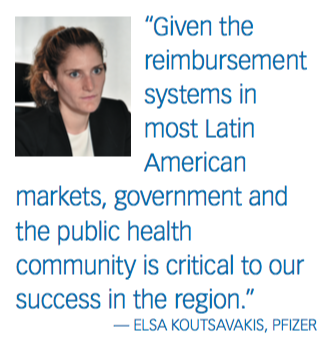
skills, not just being able to adapt an economic model or develop a local submission dossier.
How to identify and engage the right people, connect with decision-makers on core issues and interests is equally important as health technology assessment that we neglect at our peril.
Koutsavakis: Decisions on the reimbursement of medicines are made within a political context in most cases in Latin America. Market access leadership must keep this in mind when advancing objectives. For example, in Mexico, the community of decision-makers has undergone changes, and so in addition to developing meaningful access strategies and leveraging technical expertise, we must also engage and understand the needs of the political and government decision-makers and internalize these insights into our approach. HTA in general in Latin America is a good example. It’s layered on to the top of pre-existing-decision machinery, and so our strategies must be multi-faceted in nature.
PE: If Dillon believes in the importance of clinical guidelines as a policy fundamental, shouldn’t industry highlight its contribution to raising the quality and scope of local clinical trials and post-marketing approval activities, including the supporting infrastructure?
Ngai: I think our industry highlights often its contribution towards advancing science and care for patients and improving lives. Clinical research is the bread and butter of our business model. It takes a significant investment to undertake clinical trials. And, our investments in countries extend further out from this, including employment, physician education, investigator-initiated studies, manufacturing, distribution, and other facilities. Therefore, we expect a fair reward on new, meaningful, and innovative medicines which benefit patients and society. When a country is challenged to deliver this, it affects investment at all levels.
Garnica: Governments in the region are aware of the importance of underpinning support for innovation with infrastructure. Many countries are making at least some effort: technology corridors that provide incentives for the location of physical plant are an example. Brazil negotiates directly for technology transfer commitments as an element in marketing approval and pricing. That said, few people are predicting Latin America will be the destination of choice for drug R&D.
Ngai: Maybe not as many but there are world-class hospitals and academic centers that are very competitive in conducting top-notch research in Latin America.
PE: What about potential allies-like patients? What are the positives and pitfalls in relations with this crucial stakeholder?
Garnica: Patient advocacy is critical. Their only protection is the voice that carries. As the middle class grows and becomes more vocal on health, organized patients are poised to become the vehicle for change. We must do more to put the patient at the front of our effort on access.
Koutsavakis: Today, the role of the patient differs by market. In Brazil, patient groups have a visible and engaged position in the decision-making arena. However, in general, patient groups and the range of their activities are less advanced compared to counterparts in the US and Europe. In some markets, the voice of patient groups in the reimbursement of medicines is under developed due to policy or political frameworks or norms.
Nagle: Social media is having a positive impact on patient group influence, if only because it allows for more interactions between patients and caregivers. Information about specific diseases is available to fuel local advocacy campaigns to demand better care. Governments are responding with special funds or outlays to finance the cost of ‘essential medicines’ for diseases that attract social media attention. Patient group cross-talk between markets has driven the creation of new networks of patient advocacy on a regional and global scale, Latin American patients are very active online and are sharing many creative approaches to increasing the patient voice
PE: How is market access in Latin America being deployed, from an organizational point of view? How are your companies set up in this important functional area?
Duttagupta: The leading edge of the market access funciton in Latin America has traditionally focused on government relations. The rationale? Better access to the national medicines chest is predicated on strong relationships with government and
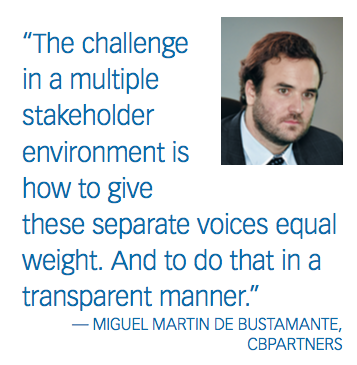
regulatory stakeholders, as well as the industry trade association. Increasingly, however, the trend favors a more expansive strategy focused on stakeholder management covering a diverse array of interests.
Koutsavakis: Building close synergy between market access and the corporate affairs is critical for success in the region. We seek talented colleagues who are adept at both the technical aspects of the function and have the abilities to positively shape the evolution of the environment.
Nagle: My company is on board with the idea that new voices must be incorporated in healthcare decision-making. There is room to negotiate common ground with many stakeholders on issues like defining value or fine-tuning the HTA process to ensure the right resource decisions are made. We are not perfect, but we are also not the same industry we were 20 years ago. I’d say that applies to the major institutions responsible for public health, too. One step at a time, our actions of trying to win for patients is putting us more into a position to bring these new voices into the process.
Duttagupta: A good example is how, even at smaller companies, patients are being consulted about what they want and expect from a company’s next oncology or hemophilia product. The feedback chain works particularly well in rare diseases, where patients are highly motivated and easy to locate.
Bustamante: There is still the obstacle course imposed by the poor transparency on the regulatory and HTA decisions. While methodologies might be laid out, the actual procedures in the decision-making process are often not transparent to the industry, which leads to lack of clarity in the decision rationale. Additionally, most manufacturers dream of a more transparent, inclusive process, which includes within the process an opportunity to weigh in the patient point of view along with the providers’ and industry’s perspective, along with the robust evidence that is often generated by manufacturers.
A question arises on how to develop a transparent process that is sensitive to the bias of these other players: the patient wants everything and the manufacturer is only too happy to give it to them. The challenge in a multiple stakeholder environment is how to give these separate voices equal weight. And to do that in a transparent manner. A challenge not so easily solved.
Duttagupta: Stakeholders, including some in industry, are trying to mobilize patients to counter government controls by asserting a constitutional right to access-that it’s illegal to deny coverage when universal healthcare is a principle mandated by the law
PE: Can this strategy be seen as an attack on physician autonomy?
Cabra: When such tactics suit the larger therapeutic interests of the patient, the answer is no. Alternatively, we can see instances where physicians are motivated by the desire to be able to apply the full catalog of expensive drugs, whenever they wish, and sometimes for personal gain. Physicians need to be sensitized to cooperate in making the supply chain of drugs more efficient. They are critical to system change.
Nagle: One way to improve the relationship with physicians is to continue emphasizing our value beyond the pill, with support services to patients that free the physician to focus on delivering better care. The potential is for us to serve as an intermediary between physician and the patient to help communication and increase efficiencies.
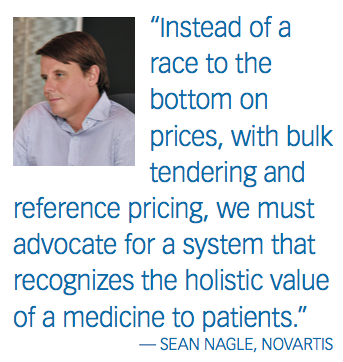
Ngai: We must be mindful of how the pharma industry is perceived by patients and physicians in emerging markets like Latin America, especially when discussing economic aspects of market access in conversations. In developed markets, there is a general perception of big Pharma that can be counterproductive when we want to engage in a value conversation. Given the region’s aspiration/commitment toward affordable universal healthcare, I am cautious of the approach that pits patients against their government. This can lead to the opposite, where we are on the defense.
Garnica: My experience is we face difficulty in communicating our concept of value. It fails to resonate in middle-income markets experiencing significant budget shortfalls. Affordability necessarily dominates discussion about medicine. This is compounded by the emphasis of the public sector on primary care interventions rather than acute care conditions like cancer, where the drugs bill is a disproportionate contributor to the overall cost of treatment.
Ngai: That’s precisely the problem, a large portion of our pipeline investments is in expensive specialty medicines. Our priorities are not easily aligned with the affordability challenge.
PE: Perhaps the heart of the challenge is whether Latin American governments really want to make healthcare a national priority. Is it?
Duttagupta: The answer to that question is, in my opinion, no. Brazil and Mexico have a serious-yet preventable-public health problem: epidemic rates of obesity, where the two nations lead the world among children. Compare this to the fact that millions of consumers in Brazil and Mexico willingly pay the world’s highest prices- nearly $1,000 per unit-for Apple’s iPhone 6. There is money to spend, but it’s not going to healthcare.
PE: As market access specialists, are you happy with the way the function has evolved? Is market access fully integrated to the decision model at the executive “c-suite” level?
Nagle: For years, there was a lot of mystery attached to market access. No one really knew what we did. The function has a high profile at Novartis today because management recognizes its importance to commercial and development success, from Phase II to launch to loss of exclusivity and even beyond. In Latin America, Novartis is on a mission of redefining the function. We are transitioning from market access to patient access. The scope is now more holistic, and key account management teams are closely engaged in building the refreshed remit internally of what our customers value the most. People are evaluated less on transaction and sales metrics, and more on establishing partnerships, or “co-creating” value, inside and outside the governing key accounts. We just completed a patient access training course for non-patient access associates in the region; over 750 people joined, with the aim of creating a new mindset of value creation and getting them more involved in innovative access strategy development and execution next year.
I think that no part of any colleague’s work responsibilities should be exempt from exposure to the patient access perspective. For example, we may have a key hospital account that is having problems retaining good nurses on their staff. We will bring in one of our HR talent retention specialists to help out, along with someone from IT to ease the workflow for nurses through better data applications. This is helping a key account run more efficiently and save costs, perhaps some of these costs can be re-invested into innovative therapies that save patient lives. That is the new patient access mindset, helping to partner within a healthcare system.
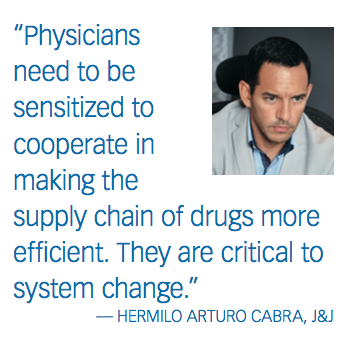
Garnica: Amgen is committed to market access as a key strategic function. In my role working with early-stage oncology assets, we rely on this skill set to engage with payers directly in shaping our value proposition to regulators and payers.
Latin America is also a market that is hard to forecast 10 years out, but we are finding that the focus around market access is helping to clarify the bets we want to wager in anticipating future growth for the portfolio.
Koutsavakis: Pfizer has a rich legacy of pricing and market access experience and we aim to build on this foundation through new partnerships with our key stakeholders. These partnerships are critical to build trust, which is the building block to improved reputation.
A better reputation for the industry in Latin America would carry benefits in the way our innovations are perceived and help facilitate patients’ access to the medicines they need.
William Looney is Pharm Exec’s former Editor-in-Chief
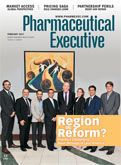
To Tackle the Plastic Waste Crisis in Pharma, Here’s Where to Start
October 30th 2024By demonstrating big advancements in recycling, pharma companies will be much more likely to attract shareholders and other investors, giving themselves a leg up in the competition to lead the biopharmaceutical industry well into the future.
